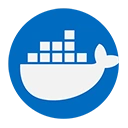Docker is a powerful tool for containerization, but there are several performance considerations to keep in mind to ensure that your applications run efficiently. This guide outlines key performance factors and provides sample code to illustrate best practices.
1. Resource Allocation
Properly allocating resources such as CPU and memory is crucial for optimal performance. Docker allows you to set limits on the resources that containers can use.
Example: Limiting CPU and Memory
docker run --memory="512m" --cpus="1.0" my_image
In this example, the container is limited to 512 MB of memory and 1 CPU core, which helps prevent resource contention on the host system.
2. Image Size
Smaller images lead to faster deployment times and reduced storage requirements. Use minimal base images and remove unnecessary files and dependencies.
Example: Using a Minimal Base Image
FROM alpine:latest
RUN apk add --no-cache my_dependency
This Dockerfile uses the Alpine Linux base image, which is lightweight and helps keep the overall image size small.
3. Layer Caching
Docker images are built in layers, and each command in the Dockerfile creates a new layer. Efficient use of caching can significantly speed up the build process.
Best Practices for Layer Caching
- Order your Dockerfile commands from least to most frequently changing.
- Combine commands where possible to reduce the number of layers.
Example: Optimizing Layer Caching
FROM ubuntu:latest
RUN apt-get update && apt-get install -y \
package1 \
package2 \
&& rm -rf /var/lib/apt/lists/*
This example combines multiple commands into a single RUN statement, reducing the number of layers and improving caching efficiency.
4. Networking Performance
Docker provides several networking options, and the choice of network mode can impact performance. For example, using the host network mode can reduce latency.
Example: Using Host Network Mode
docker run --network host my_image
This command runs the container using the host's network stack, which can improve performance for network-intensive applications.
5. Storage Drivers
The choice of storage driver can affect the performance of your containers. Different storage drivers have different performance characteristics, so it's important to choose one that suits your workload.
Example: Checking the Current Storage Driver
docker info | grep "Storage Driver"
This command displays the current storage driver in use, allowing you to evaluate its performance characteristics.
6. Monitoring and Profiling
Regularly monitoring and profiling your containers can help identify performance bottlenecks. Tools like Docker stats, cAdvisor, and Prometheus can provide insights into resource usage.
Example: Using Docker Stats
docker stats
This command provides real-time statistics on CPU, memory, and network usage for all running containers, helping you identify performance issues.
7. Conclusion
By considering resource allocation, image size, layer caching, networking performance, storage drivers, and monitoring, you can optimize the performance of your Docker containers. Implementing these best practices will lead to more efficient and responsive applications in your containerized environment.

